41 examples of nutrient claims on food labels
Food Label Claims: What You Can and Can't Trust - WebMD For example, a label could say that getting enough calcium throughout your life, and having a balanced diet, may lower your chances of getting osteoporosis. Structure/function claims. These... Nutrient Content Claim vs Health Claim - LabelCalc Nutrient content claims, which are commonly used on food labels, either refer to the amount of a nutrient in a product or compare the levels of a nutrient in that food to a similar reference food. When referring to the amount of a nutrient in a product, words such as "low," "free," and "high" are often used.
Decoding the Nutrition Label: Health Claims and Nutrient ... - Unlock Food Below are examples of health claims you may find on some foods: A healthy diet rich in vegetables and fruit may help reduce the risk of some types of cancer. A healthy diet low in saturated and trans fat may reduce the risk of heart disease.

Examples of nutrient claims on food labels
Understanding Food Labels - Nutrition: Science and Everyday Application ... As an example of an authorized health claim, a food that is low in sodium (per the FDA's definition of less than 140 mg per serving) can include the following claim on their packaging: "Diets low in sodium may reduce the risk of high blood pressure, a disease associated with many factors." 1 Nutrient Claims on Food Labels - HGIC@clemson.edu The label on a can of pears says there is "no added sugar." The words on a milk carton boast that it is "high in calcium." Certain breakfast cereals claim to be "high in fiber." "Lite" salad dressing and cookies with "fewer calories" also catch your eye. These are all nutrient content claims. Nutrition and Health Claims in Food Labelling | Eufic This is the first piece of specific legislation to deal with nutrition and health claims. Its aims are: To ensure a high level of consumer protection by guarding against unsubstantiated, exaggerated or untruthful claims about foodstuffs. With the new legislation, consumers can rely on clear and accurate information on food labels, enabling them ...
Examples of nutrient claims on food labels. 5 Understanding Food Labels and Health Claims - Maricopa There are three levels of health claims: A health claim is supported by scientific evidence. An example is "reduces heart disease." A qualified claim has supportive evidence, which is NOT definitely proven with scientific evidence. There is evidence to SUGGEST a health benefit, but there is no scientific evidence. What are Nutrient Content Claims on food labels? What are Nutrient Content Claims on food labels? Some examples of nutrient content claims are sugar-free, lean, light, and many other terms. Some Nutrient claims are about the content of certain nutrients and may state that the product is low in fat or a good source of calcium. Nutrition claims - Language selection | Food Safety Permitted nutrition claims · LOW ENERGY · ENERGY-REDUCED · ENERGY-FREE · LOW FAT · FAT-FREE · LOW SATURATED FAT · SATURATED FAT-FREE · LOW SUGARS. Food Label 101: What are Nutrient Claims? Food Label 101: What are Nutrient Claims? ; Calorie claims · Calorie-free – less than 5 calories per serving ; Sugar claims · Sugar-free – less than ½ gram of sugar ...
Food Labels Guide & Examples | How to Read Nutrition Labels - Video ... A glass of orange juice, for instance, may contain a significant amount of Vitamin C while a chocolate bar may not contain any, so Vitamin C would not be listed on the chocolate bar's food label.... GUIDELINES FOR USE OF NUTRITION AND HEALTH CLAIMS (b) the mention of nutrients as a mandatory part of nutrition labelling; ... The presentation of risk reduction claims must ensure, for example, by use of ... 8 misleading food marketing labels | AGDAILY It turns out that many, if not most of them, really aren't. Here are 8 of the most common misleading food marketing claims: 1. No nitrites or nitrates added. Although this particular labeling regulation may be changing soon, you may have noticed the "No Nitrites or Nitrates Added" label on processed meat products, such as deli meats and ... 9 Sneaky Nutrition Claims Not to Fall for at the Grocery Store To help you make smarter food choices when grocery shopping, dietitians uncover the most popular nutrition claims to be wary of and why. 1. 'Whole Grains' or 'Multi-Grain'. When a product claims to have whole grains, it simply means that there are whole grains, such as whole-wheat, quinoa, brown rice and rolled oats, present in the product, but ...
Label Claims for Conventional Foods and Dietary Supplements Examples include simple percentage statements such as "40% omega-3 fatty acids, 10 mg per capsule," and comparative percentage claims, e.g., "twice the omega-3 fatty acids per capsule (80 mg) as in... Label Claims for Food and Dietary Supplement - LBS RCS.COM The Nutrition Labeling and Education Act of 1990 (NLEA) provides for the use in food labeling of health claims that characterize a relationship between a food, a food component, or dietary ingredient and risk of a disease (for example, "adequate calcium throughout life may reduce the risk of osteoporosis"), provided the claims meet certain criteria and are authorized by an FDA regulation. Nutrient Claims on Food Labels - Food Smart Colorado 3 g or less per serving. Cholesterol free. Less than 2 mg of cholesterol and 2 g or less saturated fat per serving. Salt or sodium free. Less than 5 mg per serving. Low sodium. 140 mg or less per serving. High in or excellent source of or rich in. One serving provides at least 20% or more of the Daily Value for a particular nutrient. Food Packaging Claims | American Heart Association "Reduced" or "Less" mean the food has 25% less of a specific nutrient than the regular product. "More," "Fortified," "Enriched," "Added," "Extra," or "Plus" means the food has 10% or more of the Daily Value (DV) than the regular product. May only be used for vitamins, minerals, protein, dietary fiber, and potassium.
Nutrient Claims on Food Labels - Truly Good Foods Nutrient Claims on Food Labels July 19, 2018 Nutrient claims describe the content of a food, including the amount of nutrients, calories, cholesterol or fiber, but not in exact amounts. Usually on the front of the food label, the nutrient claim provides a quick comparison between similar products.
Food Labels | CDC - Centers for Disease Control and Prevention All the numbers on this label are for a 2/3-cup serving. This package has 8 servings. If you eat the whole thing, you are eating 8 times the amount of calories, carbs, fat, etc., shown on the label. Total Carbohydrate shows you types of carbs in the food, including sugar and fiber. Choose foods with more fiber, vitamins, and minerals.
The Effects of Nutrition Knowledge on Food Label Use: A Review of the ... In general, these studies show that nutrition knowledge supports understanding of claims on food labels. For example, Howlett et al. (2008) investigated the effects of trans fat knowledge on use of claims and nutrition labels in two studies by inducing trans fats knowledge through the exposure to educational materials prior to the rating task ...
Nutrient Content Claims | FDA - U.S. Food and Drug Administration Nutrient Content Claims. See Claims That Can Be Made for Conventional Foods and Dietary Supplements for definitions of claims. Final Rule: Food Labeling: Nutrient Content Claims; Alpha-Linolenic ...
Introduction to Food Product Claims — FDA Reader Examples of a Structure/Function Claim: "Calcium builds strong bones" "Fiber maintains bowel regularity" "Antioxidants maintain cell integrity" Conventional food producers do not need to notify the FDA about structure/function claims or make disclaimers associated with these claims on their product labels.
Nutrient function claims - Health claims on food labels - Food labels ... For example, the nutrient function claim "Milk helps build strong bones and teeth" is unacceptable, because a nutrient function claim refers to the nutritional function of energy or a nutrient ( e.g., calcium) in a food, not a particular food ( e.g., milk).
7 fake claims on food nutrition labels that are affecting your diet Nutrition claim #2: Sugar-free. A lot of 'diet-friendly foods' proudly claim on their label that they contain no sugar and are still sweet or have 'great taste'. A closer look at their labels will show an addition of either honey or high fructose corn syrup, malt, dextrin or even sugar alcohols like maltitol or sorbitol.
Understanding Food Labels | The Nutrition Source | Harvard T.H. Chan ... For example, a bag of potato chips may advertise that it has 40% less fat and is cholesterol-free, suggesting it is a "healthy" food, when in reality even a "healthier" potato chip is still a high-calorie ultra-processed food offering little nutrition. Some terms are not yet regulated by the FDA such as " natural " or "multigrain."
Nutrition content claims and health claims - Food Standards For example: 'calcium for healthy bones and teeth'. These claims are either based on one of the more than 200 pre-approved food-health relationships in the Standard, or a food-health relationship self-substantiated by the food business using the scientific method set out in the Standard.
Nutrient content claim examples - Nutrient content claims: reference ... Nutrient content claim example - fibre claims Example - High source of fibre The following claim appears on a box of 6 muffins: "High source of wheat bran and oat bran". Each muffin contains 1.5 g of fibre from wheat bran and 3.5 g of fibre from oat bran per serving of stated size of 90 g.
Nutrition and health claims on labels and in food advertising Most of the permitted health claims relate to a specific ingredient or nutrient; some claims relate to a food, for example "dried plums contribute to normal bowel function" or "sugar-free chewing...
Factual Food Labels: Health Claims - University of Texas at Austin The terms that are used in this type of label is "free," "reduced," "high," and "low." These type of claims are only applicable to nutrients that have a % daily value established such as saturated fat, added sugars, and vitamins and minerals. An example of this type of claim is "low/less sugar."
19 popular nutrition claims (some are false!) - Leesa Klich There are so many conflicting nutrition claims out there that it is nothing short of confusing! The best diet is vegan/vegetarian. We need 10,000 steps per day for good health. We are 10x more microbe than human. Coffee is healthy/dehydrates you/causes cancer. Protein is good/bad for your bones. Multivitamins improve your health/do nothing ...
Nutrition and Health Claims in Food Labelling | Eufic This is the first piece of specific legislation to deal with nutrition and health claims. Its aims are: To ensure a high level of consumer protection by guarding against unsubstantiated, exaggerated or untruthful claims about foodstuffs. With the new legislation, consumers can rely on clear and accurate information on food labels, enabling them ...
Nutrient Claims on Food Labels - HGIC@clemson.edu The label on a can of pears says there is "no added sugar." The words on a milk carton boast that it is "high in calcium." Certain breakfast cereals claim to be "high in fiber." "Lite" salad dressing and cookies with "fewer calories" also catch your eye. These are all nutrient content claims.
Understanding Food Labels - Nutrition: Science and Everyday Application ... As an example of an authorized health claim, a food that is low in sodium (per the FDA's definition of less than 140 mg per serving) can include the following claim on their packaging: "Diets low in sodium may reduce the risk of high blood pressure, a disease associated with many factors." 1
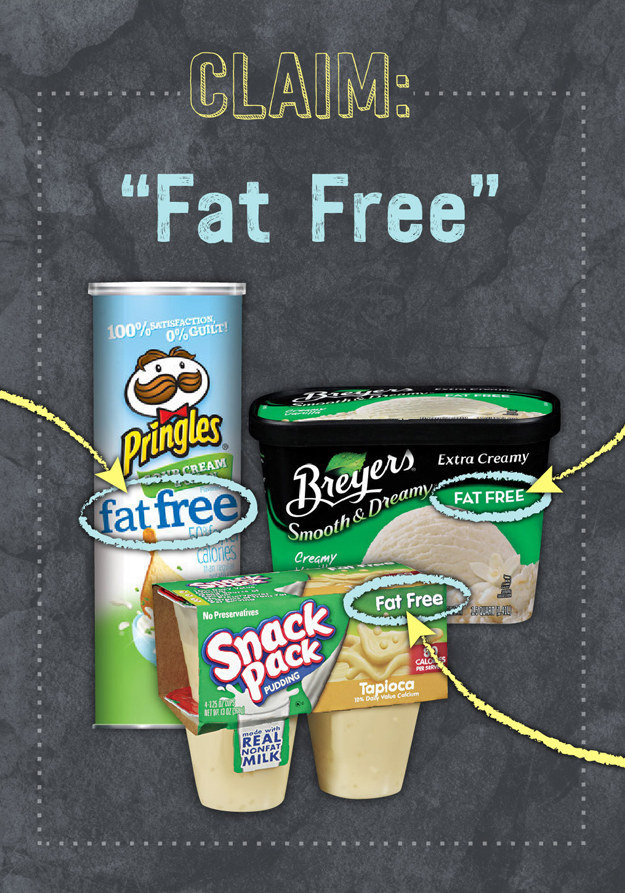
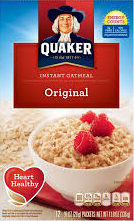



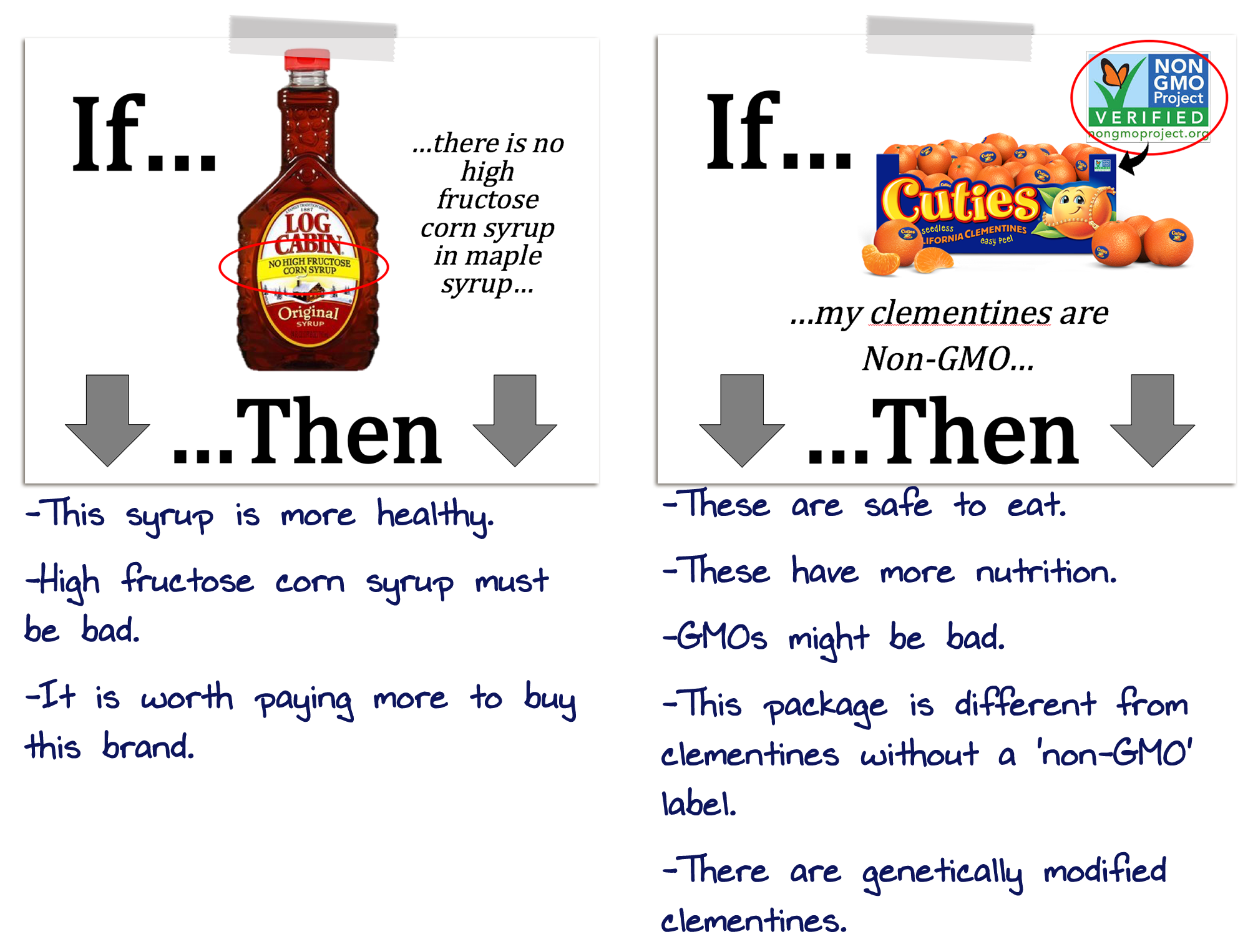
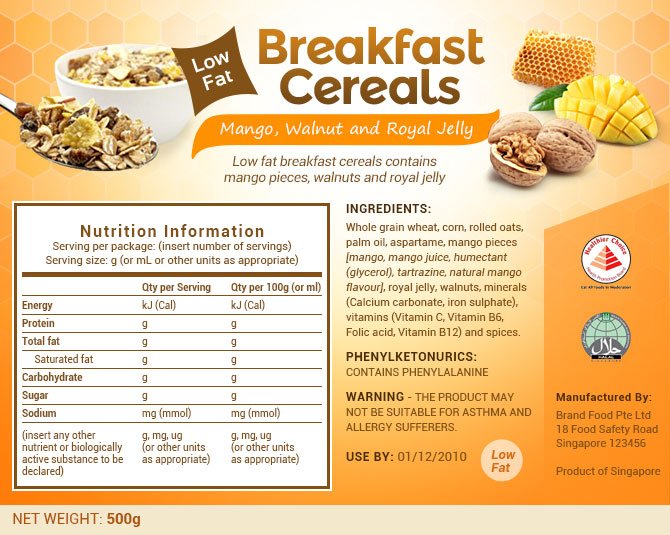

:no_upscale()/cdn.vox-cdn.com/uploads/chorus_asset/file/3648106/quaker-oats-heartlabel.0.jpg)


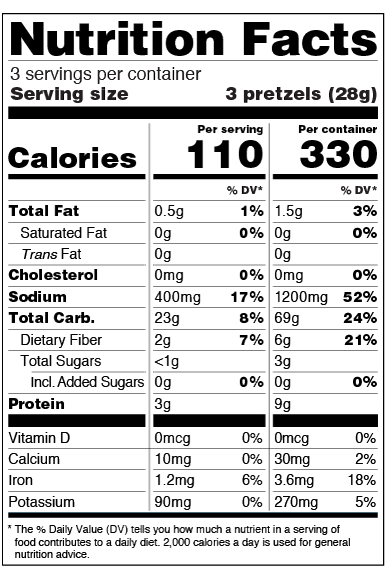
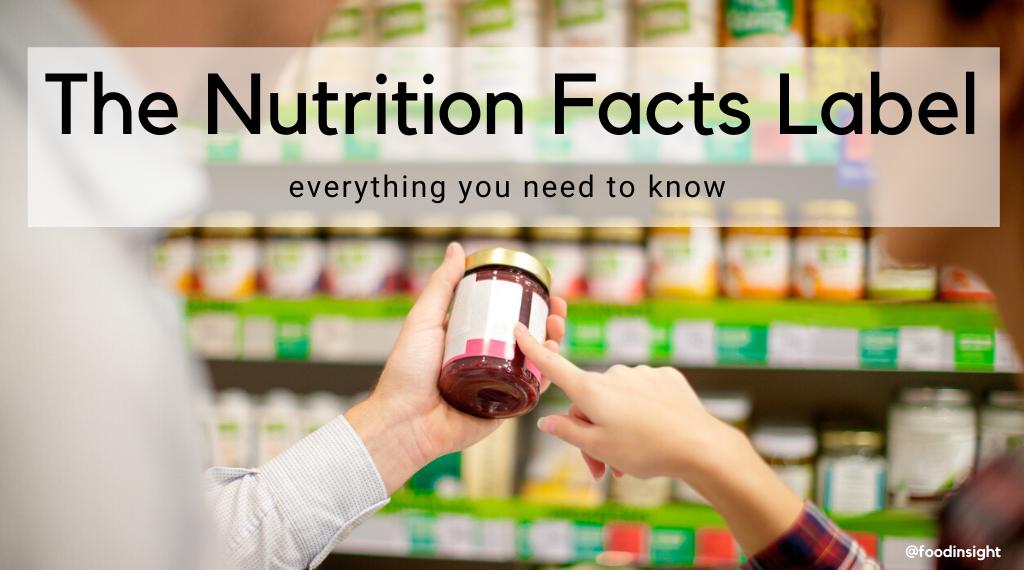
:no_upscale()/cdn.vox-cdn.com/uploads/chorus_asset/file/3650624/quakerlabel-shelf.0.jpg)
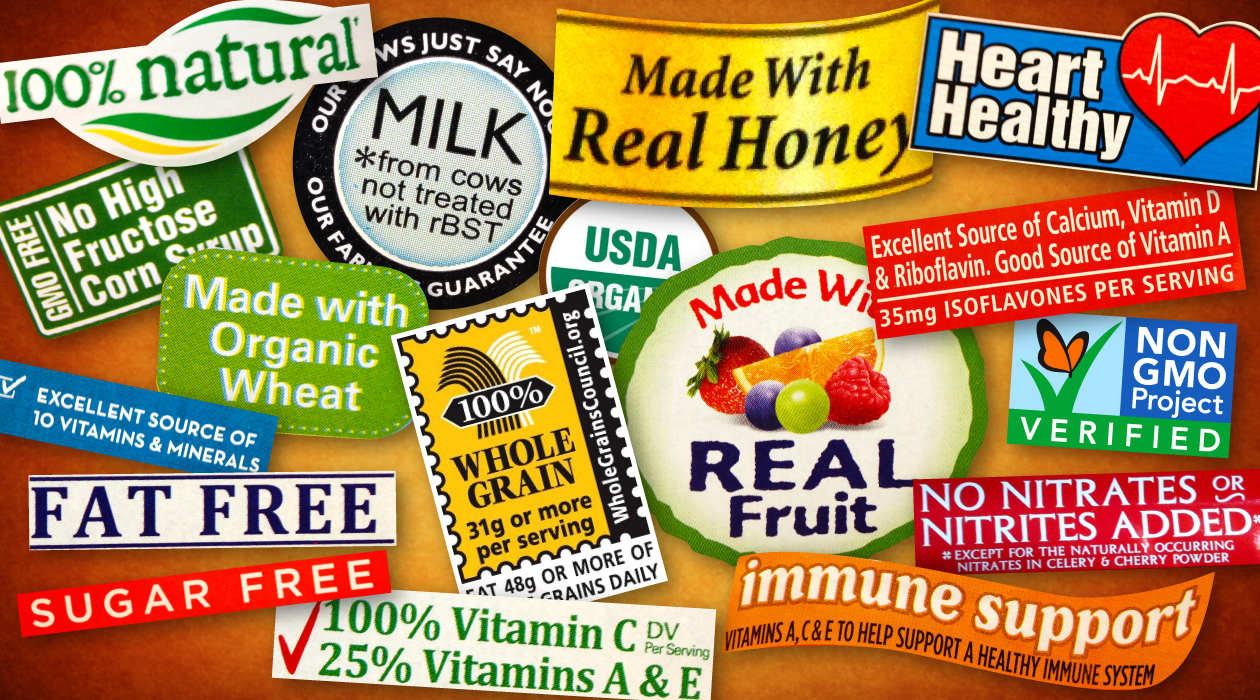

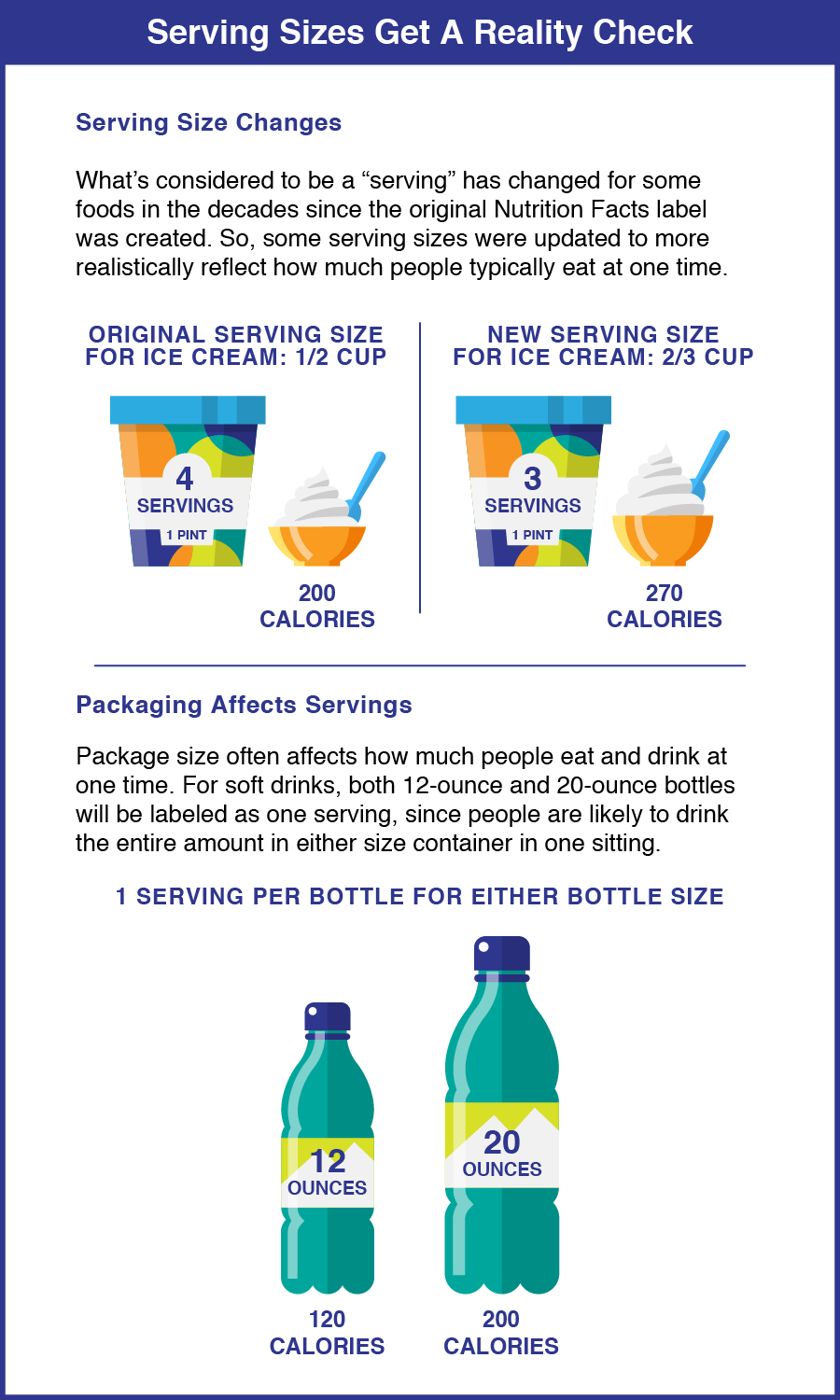
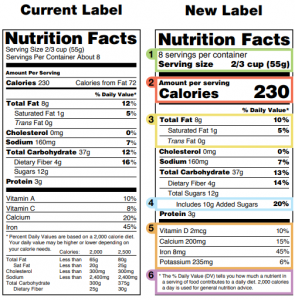
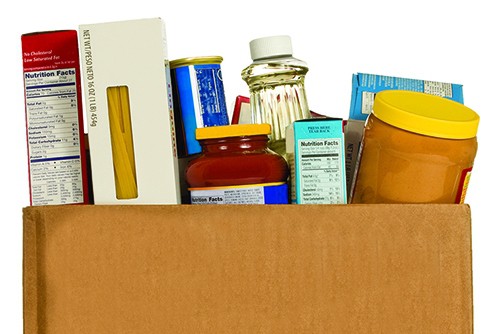







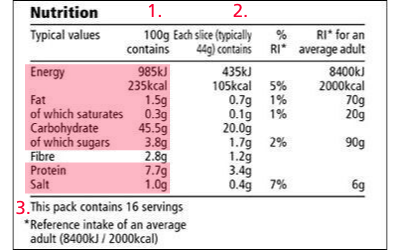
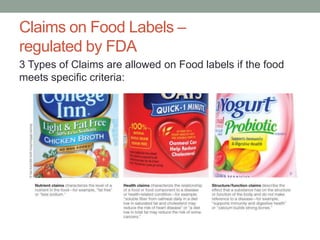

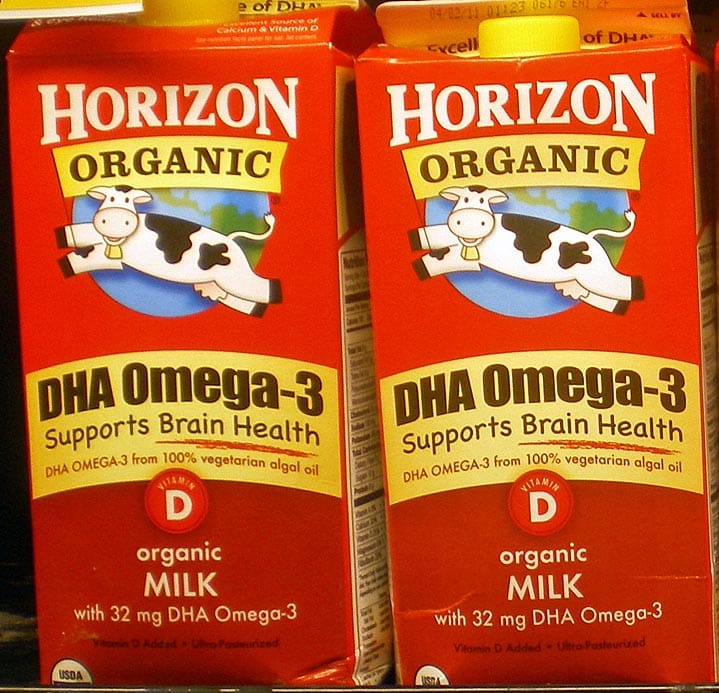




:no_upscale()/cdn.vox-cdn.com/uploads/chorus_asset/file/3652082/healthy-choice.0.png)
Post a Comment for "41 examples of nutrient claims on food labels"